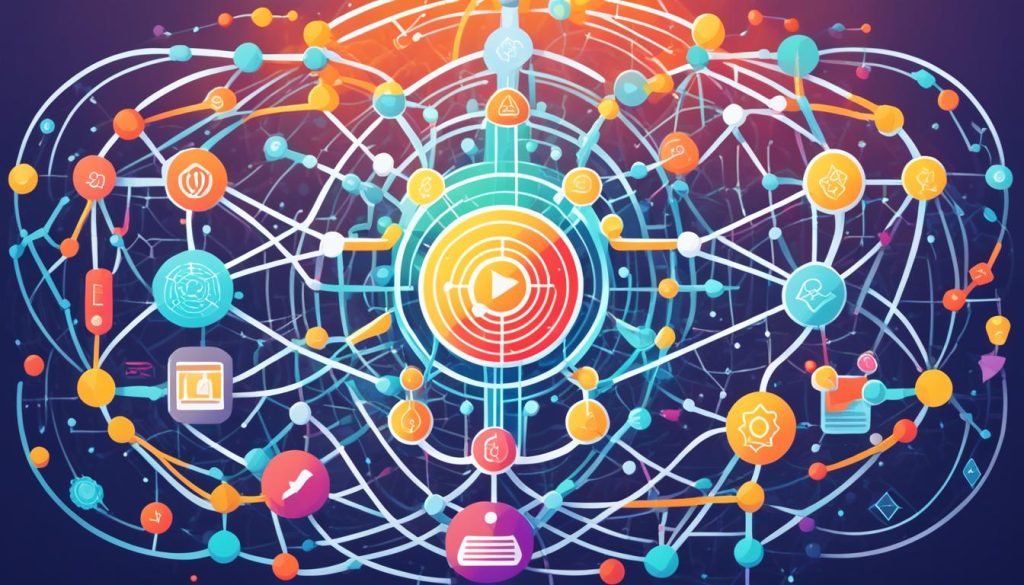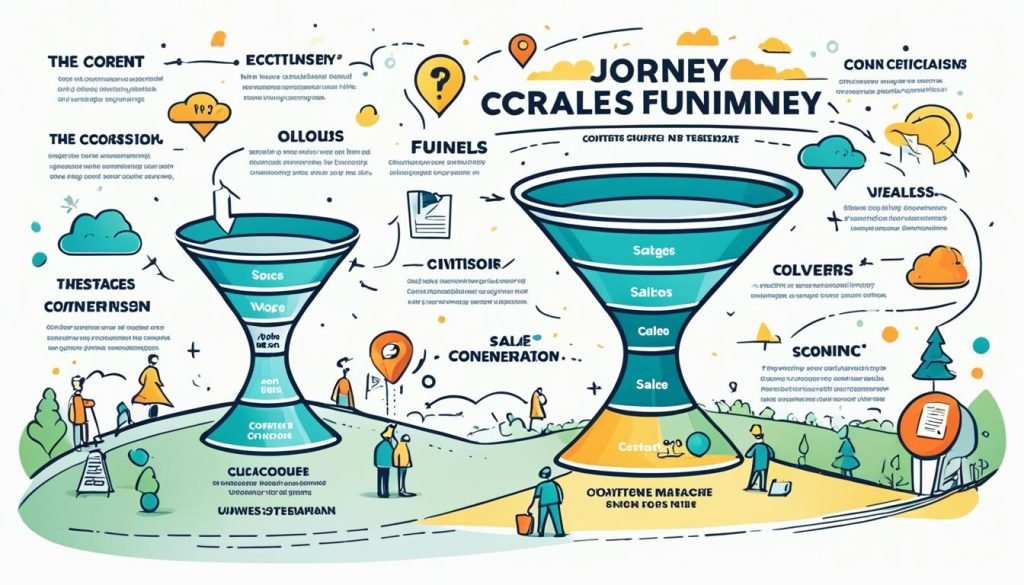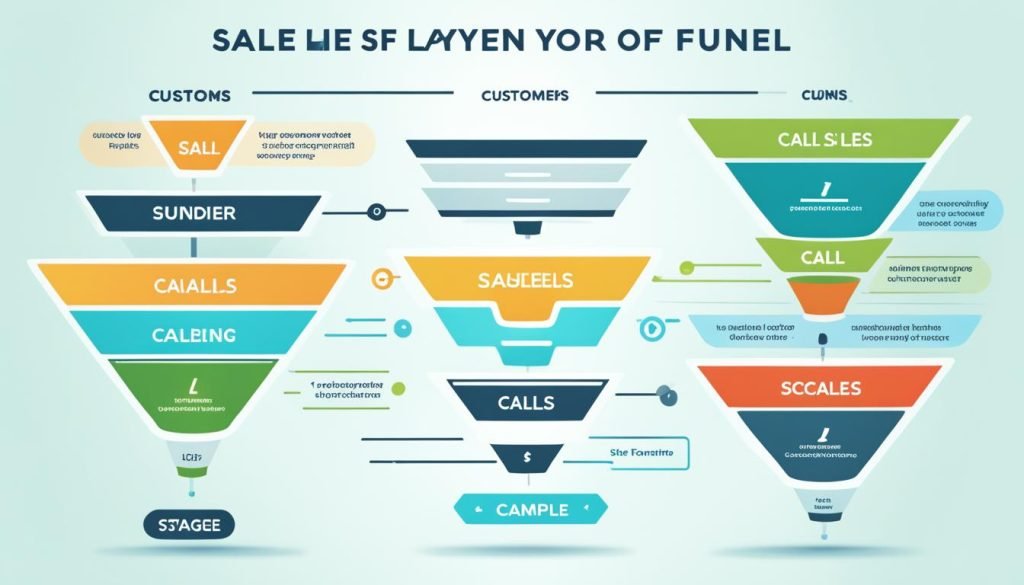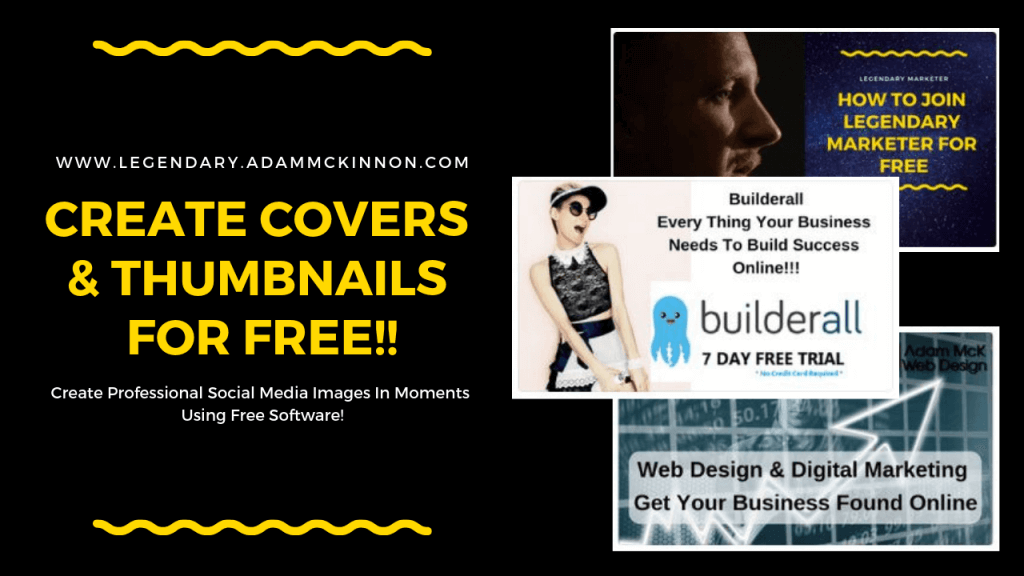Imagine walking into a store that’s beautifully designed. You’re welcomed by friendly staff who show you around. You find a product you like and a store associate helps you learn more about it. They answer your questions and make you feel good about buying it. When checking out, the cashier is attentive, making your purchase easy.
Such an experience is created by a sales funnel. It guides your customers from their first look at your products to buying. Sales funnels are key tools for businesses today. They help understand what customers want and increase sales.
A sales funnel is your plan for moving customers from interest to purchase. It shows you how to find your target customers. Then, it helps you attract them with engaging offers and pages. You follow up with them through emails to turn their interest into a sale.
Think of a sales funnel as your helpful guide. It shows you the best way to lead customers to buying. Using the latest tools like AI and videos, you can make your sales funnel even better. This can help you grow your business quickly.
Ready to boost your business? We’re here to guide you through sales funnels. You’ll learn everything from the basics to making your funnels work for your customers. Let’s unlock your business’s true potential!
Key Takeaways:
- Sales funnels help customers move from first look to purchase.
- To make a sales funnel, you need to know who your customers are and what they like. You then make things that catch their eye and interact with them.
- Knowing what makes people buy and telling them stories can make your funnel work better.
- Using tools that organise and manage sales better can make your funnel more efficient.
- Adapting your sales funnel to fit the people you want to buy from you can raise your sales.
Understanding Sales Funnels: The Basics and Importance
A sales funnel is a step-by-step process, guiding potential clients towards a purchase. It’s vital for today’s companies. They adjust to customer habits, boosting sales and results. Each step ensures focus on turning prospects into actual customers.
Why are Sales Funnels Important?
Mastering sales funnel basics is key to business success. It helps turn leads into loyal clients by leading them through several steps. Sales funnels are crucial because they:
- Guide prospects through a structured process: They lead clients from discovery to purchase in a clear, logical way.
- Optimize resource allocation: Companies can direct resources wisely, prioritizing potential customers based on their stage in the funnel.
- Drive conversions and revenue: By spotting areas where leads drop off, businesses improve their sales efforts, boosting earnings.
The Role of Sales Funnels in Consumer Behavior
Consumer behavior is tricky, but sales funnels simplify it for businesses. They match marketing and sales to consumers’ journey stages. From first awareness to final sale, they craft each interaction, pushing clients towards buying.
Key Components of Sales Funnels
| Components | Description |
|---|---|
| 1. Awareness | Attracting potential customers and making them aware of your product or service. |
| 2. Interest | Capturing the interest of prospects by providing valuable information and engaging content. |
| 3. Evaluation | Guiding prospects through the evaluation stage, showcasing the value and benefits of your offering. |
| 4. Decision | Assisting prospects in making a final decision by addressing their concerns and providing compelling reasons to choose your product or service. |
| 5. Action | Encouraging prospects to take the desired action, whether it’s making a purchase, signing up for a subscription, or requesting more information. |
Understanding these steps and their role helps companies tailor their efforts, boosting sales success.
Components of Successful Sales Funnels
To create a successful sales funnel, certain components are crucial. These elements help in drawing in leads and turning them into customers. By knowing and using these parts well, you can improve your sales process and up your conversions.
Establishing a Target Market
Launching a sales funnel starts with finding your main audience. You need to know your perfect customer, create buyer personas, and do market research. This helps in making your messages and products appeal to them.
Creating Lead Magnets
A lead magnet is something valuable that pulls people into your funnel. It could be an ebook, a webinar, or special content. It must address your audience’s problems to win their trust and belief in you.
Building Converting Landing Pages
Landing pages are key to grab your visitor’s attention. They should be set up to push visitors towards taking action. This could mean they buy something, sign up for a service, or want more details. A good landing page design can boost your chances of turning visitors into customers.
Developing Leads with Email Chains
Using email chains can help nurture leads and build a relationship. Offer value, give personal suggestions, and tell interesting stories. This keeps your prospects interested and guides them deeper into the funnel.
Maximizing Conversions with Optimization
Making the most of your conversions needs constant work. You should test various funnel parts, look at how they’re performing, and improve them based on results. Doing this enhances your funnel, turning more leads into sales over time.
Putting these five aspects together well can significantly boost your lead conversion. By focusing on your target market, offering attractive lead magnets, having effective landing pages, using email chains, and continuously optimizing, you ensure your sales funnel reaches its peak performance, driving business growth.
The Mindset Influencing Consumer Choice
It’s key to understand why people buy things. This knowledge helps make sales funnels that work well. Using ideas like giving free stuff, showing good reviews, and saying there’s not much left can really change how people decide to buy. Telling stories is also big. It can make people feel a connection to a product, which makes them more likely to buy it.
Reciprocity gets people to give back when given something nice first. Like a free e-book or a discount. This makes customers feel like they owe the business, which can lead them to do what the business wants.
People often look at what others do before making their choice. This is where social proof comes in. Quotes from happy customers, good reviews, and endorsements help build trust. This trust can turn a maybe into a yes.
Making something seem rare or in high demand makes people want it more. This is what scarcity does. Offering something for a short time or saying there’s only a few left can push buyers to act quickly. They don’t want to miss out.
Storytelling in Funnels
Telling stories can really pull a customer in. They make the business look real and the product a must-have. A good story can get into a customer’s heart and make them want to be a part of the brand. This can make people more willing to buy.
Telling the right story can make a brand stand out. It shows what a business values, makes people feel stuff, and talks about products in a way everyone can relate to. A story that’s done well can grab consumers’ attention and help them decide to buy.
Good stories include characters we like, problems that get solved, and situations we’ve been in. This can make people really feel for a brand. It can build a strong bond of trust and make customers pick one brand over another.
| Psychological Trigger | Definition | Application in Funnel Design |
|---|---|---|
| Reciprocity | The tendency to reciprocate when something valuable is received | Offering freebies, discounts, or valuable resources to create a sense of indebtedness and encourage conversions |
| Social Proof | Relying on others’ opinions and actions to guide decision-making | Using testimonials, reviews, and endorsements to build trust and credibility, influencing consumer choices |
| Scarcity | The perception of limited availability or time-limited offers | Creating urgency and tapping into the fear of missing out (FOMO) to drive immediate action |
CRM Integration and Automation for Sales Funnel Optimization
Using CRM integration and automation is key to making your sales funnel work better. These tools change how you handle customer info, make your sales smooth, and improve how you use data to boost sales.
With CRM integration, you can better interact at each sales stage. By keeping all customer data in one place, you can understand what every customer wants and needs. This helps you to customise your sales pitch, send focused messages, and form better connections. It lets you keep track of all discussions and deals.
Automation is important too. It cuts out manual tasks, letting your sales team spend more time on important work. For instance, with chatbots, you can talk to customers live, help them straight away, and guide them down the funnel. Auto emails keep leads warm, sending them useful info that encourages them to buy. This saves time and makes your team work better.
Automation tools streamline repetitive tasks, freeing up time for your team to focus on building relationships and closing deals.
Using analytics is crucial for making good choices in sales funnel management. It shows you what customers do, helping you adjust and get better results. By studying KPIs, you find and fix problems, and make your sales approach better. It’s also a great way to see if your marketing is working and find chances to grow.
By putting CRM, automation, and analytics together, you get a strong sales boost. You get personal, smooth interactions plus smart choice making, pushing sales forward.
Benefits of CRM Integration and Automation in Sales Funnel Optimization
By using CRM and automation in your sales process, you get several wins:
- Improved customer experiences: Custom care and quick chats boost satisfaction and loyalty.
- Increased efficiency: Less manual work means more time for important tasks, improving how much your team gets done.
- Enhanced lead nurturing: Auto emails and chatbots look after leads, sending helpful info all the way.
- Data-driven decision-making: Analytics give deep dives into what customers want, helping you make smart choices to grow.
- Streamlined sales processes: CRM makes sales and data organisation easy and smooth, for a more effective team.
With CRM and automation, your sales strategy can achieve its full potential. It’s a recipe for big business growth.
Now, let’s see how customising sales funnels for different buyer types and journeys can add even more to your sales and marketing game.
Tailoring Funnels to Buyer Personas and Customer Journeys
Adapting sales funnels for different buyers is vital. It’s more than putting their name in an email. True personalisation means offering content that fits their exact needs. Knowing your market’s buyer personas leads to a more effective sales strategy.
Mapping out their journey helps massively. You can shape the content to where they are in the buying process. This means you talk to them about what matters most at each step. Doing this guides them easily through the sales funnel, boosting chances of a sale.
Understanding Buyer Personas
Buyer personas stand for your ideal customers. They help you really see who you’re talking to. Knowing their age, what they like, and what they need is key. This lets you make content that feels custom-made for each one.
Mapping the Customer Journey
Visualising the customer journey is about every step from noticing your product to buying it. Knowing these steps helps you offer the right support all along. This is crucial for making them feel looked after, leading to more successful sales.
“Mapping the customer journey is like holding up a mirror to the way your customers interact with your business and helping them navigate through the buying process.”
Personalized Content Strategies
With the buyer personas and journey mapped, you can make content that really hits home. This includes crafting emails just for them and designing ads that they’ll love. Such personalised steps build trust and nudge them towards buying from you.
But, this work never stops. Keep checking the data, trying out new ideas, and improving based on what you learn. This keeps your sales funnel sharp and effective, helping your business grow.
Scaling and Growing Your Sales Funnels
Scaling your sales funnels is key for business growth. As your business grows, you’ll want to maintain efficiency and tackle challenges to growth. This part looks at important ways to grow and scale your sales funnels. It aims at reaching more people while keeping the funnel’s quality high.
One key method is to use automated workflows and standard processes. This makes tasks that happen over and over again easier and faster. You’ll boost your efficiency and keep the customer journey smooth.
Expanding your funnel through different channels helps too. Use social media, emails, and ads to grow your audience. This way, you can find more leads and turn them into customers.
But, scaling brings its own set of problems. More traffic can stress your systems and make your site unstable. To avoid this, invest in strong technology that can handle more visitors without slowing down user experience.
Regularly checking and tweaking your funnels is essential. Look at how users behave and see where they might get stuck. Then, use this info to make your funnels better. By focusing on key indicators, you’ll know what to change to enhance your funnel experience.
Dealing with scalability issues mean always looking to improve. Stick to smart strategies to grow your funnels. Always aim to give your customers the best experience possible.
Tips for Scaling and Growing Your Sales Funnels:
- Implement automated workflows and standardized processes to maintain efficiency
- Diversify your funnel channels through multi-channel funnels
- Invest in robust technology and infrastructure to handle increased traffic
- Analyze user behavior and optimize your funnels based on data-driven decisions
By following these tips, your business can overcome scalability challenges and achieve sustainable growth through your sales funnels.
Innovative and Advanced Methods in Sales Funnels
To keep up in a tough market, businesses need to use new and smart methods. They can improve their sales funnels this way. This means using the latest tech and strategies to achieve better sales. Let’s look at three important areas to work on.
AI in Sales Funnels
Artificial Intelligence (AI) changes how we look at sales funnels. It uses big data to understand what customers want. AI helps predict what customers might buy. This means, using AI, your business can give customers exactly what they need. From guessing what products they want to suggesting what to buy, AI helps increase sales.
Video Marketing Strategies
Adding video to your sales strategy can really help. Videos can explain things in a way just words can’t. They make people feel something. This makes videos great for telling stories and making your brand stand out. You can use them to show how a product works or why customers love it. This deepens your connection with customers.
Chatbots in Funnels
Using chatbots in your sales process makes things smoother for customers. They answer questions fast and even suggest products. Chatbots talk to customers in a way that feels personal. This helps in handling routine tasks, so your team can focus on more important sales work.
By using these modern methods, you can really make your sales process better. AI, video, and chatbots help you connect with customers in an innovative way. They not only improve how customers interact with you but also help your sales get better. So, make the most of these tools and get ahead in the market.

Next, we’ll explore the key differences between marketing and sales funnels and understand how they work together to drive business growth.
Marketing Funnel vs. Sales Funnel: Understanding the Key Differences
Marketing and sales funnels play two key roles in any business strategy. Knowing how they differ is vital. It helps in boosting your business and getting more sales.
The marketing funnel starts with making people aware of your brand. It then grows their interest in your products or services. This process leads them to eventually think about buying from you.
However, the sales funnel works on turning interested people into actual buyers. It focuses on the steps from first sales talk to sealing the deal. It also ensures that customers stay engaged even after they buy something.
Here’s an easy way to understand the main differences:
- Objective: The goal of the marketing funnel is to grab attention and keep potential customers interested. The sales funnel aims to turn those interests into actual sales.
- Stages: Marketing stages include making people aware, getting them to consider your stuff, then finally interested to buy. The sales process starts with checking if people really want to buy, showing them an offer, and then finalising things.
- Metric Focus: The marketing funnel measures success through things like how many people know your brand, or how much they like your posts. In the sales funnel, success is about making deals happen and looking at the money side of things.
Here’s how the differences look in a simple table:
| Marketing Funnel | Sales Funnel |
|---|---|
| Awareness | Lead Qualification |
| Consideration | Proposal |
| Interest | Closing |
| Engagement | Retention |
Knowing the gaps between marketing and sales plays a big role. It helps you plan how to move people from just knowing about you to actually buying from you. This key knowledge can help boost your business in a big way.
Crafting Effective Marketing and Sales Funnel Strategies
Making good marketing and sales funnel strategies is key to success. Know your customers well, have a clear message, and always look to improve. With these steps, you can boost sales and beat others in the business.
Start by knowing who your customers are. Understand what they want and what problems they need solving. This helps you make ads and offers that feel personal to each group, boosting how interested they are in what you offer.
Then, make sure the journey your customers take is smooth. Think about all the steps from first seeing your product to buying it. Use pictures or maps to get a full picture and make the journey better wherever you can.
It’s also important to watch how you’re doing with key numbers. Keep track of things like how many people buy after seeing your ads and the cost to get each new customer. This info will show you where you’re losing people or where you’re doing really well. Then, you can make your plans even better to get more from your work.
Key Metrics to Monitor in your Funnel
| Metric | Definition |
|---|---|
| Conversion Rate | The percentage of leads that convert into paying customers. |
| Customer Acquisition Cost | The average cost to acquire a new customer. |
| Customer Lifetime Value (CLV) | The predicted net profit from a customer throughout their relationship with your business. |
| Churn Rate | The percentage of customers who stop using your product or service over time. |
| Return on Investment (ROI) | The ratio of the net profit generated from marketing and sales efforts to the cost of those efforts. |
By watching these key numbers, you can see how well your strategies are working. This helps you make smart choices, improve your plans, and get better results.
Always try new things in your marketing and sales. A/B testing helps you pick the best options. Use new tech like AI, videos, and chatbots to make things easier for your team and better for your customers.
Good marketing and sales plans need to change and grow. Learn from what works and what doesn’t. Keep making your strategies better to be successful for a long time.

Unlocking Business Potential: Mastering Sales Funnels
To reach your business’s full potential, sales funnels are a must. They help guide potential customers from first meeting to purchase. By perfecting your sales funnel, you can boost sales and grow steadily.
A sales funnel gently leads customers through several steps. It starts with sparking their interest and ends with them making a purchase. Each step is carefully planned to make sure customers stay interested.
Regularly checking and improving your sales funnel is crucial. Look at how people move through your funnel and where they might get stuck. Then, use this info to better your approach, keeping your funnel sharp and effective.
Put time and effort into your sales funnels to see big results. By getting sales funnels right, you set your business on a path towards lasting success. This means always looking for ways to do better.
Source Links
- https://www.portfoliobox.net/blog/building-an-effective-marketing-funnel-unlock-your-business-potential
- https://chrisnebechukwu.medium.com/what-is-a-sales-funnel-how-to-unlock-unlimited-sales-potentials-for-your-business-8f4b5fc07bf3
- https://www.linkedin.com/pulse/unlock-insights-marketing-sales-funnels-waez-khan-a2ggf
Looking For Affordable Web Design and Digital Marketing?
AM Web Design and Digital Marketing provides professional web design services at a price that you can afford. If you have any questions or want to know more about how we can help your business grow, contact us today on 0191 5111009.
You can check out our reviews on our Google Business Profile and see why we would be the right choice for you.




